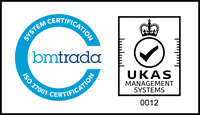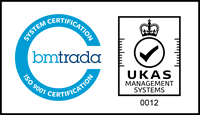Posted on: Monday October 02, 2023

In today's rapidly changing business landscape, one factor remains constant: the importance of your organisation's most valuable asset - its employees. Amid the turbulence of recent years, businesses have had to adapt to evolving challenges, and it's become increasingly clear that employees need more than just a paycheck to stay engaged and motivated. They need recognition.
Recognition: more than a "nice-to-have"
Employee recognition isn't a mere "nice-to-have" in the modern workplace. It's a strategic tool that drives engagement, enhances performance, and positively impacts an organisation's bottom line. The recent report "From Praise to Profits: The Business Case for Recognition at Work" by Gallup, Inc., sheds light on the undeniable link between recognition and business success.
In the face of uncertainty and constant change, today's employees yearn for something fundamental: the feeling of being valued and belonging to a supportive work environment. It's easy to forget that organisations are ultimately comprised of people, and their feelings, perceptions, and experiences directly influence business outcomes.
Gallup and Workhuman's previous studies have already established that employee recognition plays a crucial role in fostering an organisational culture centred around Diversity, Equity, and Inclusion (DE&I) and well-being. When done right, recognition boosts engagement and strengthens connections among employees and throughout the company. But the impact goes beyond enhancing employees' lives; it also significantly contributes to an organisation's financial success.
Three ways Recognition drives business performance
So how does recognition enhance business performance? By boosting productivity, creating safer workplaces, and reducing absenteeism. These interconnected terms illustrate how strategic recognition investments can positively impact a company's bottom line.
1. Recognition and Productivity: making work meaningful
Productivity is the lifeblood of any organisation. It's not just about the quantity of work but also the quality. Gallup's research shows that if organisations double the number of employees who strongly agree they've received recognition for doing good work in the last week, they can expect a nine per cent improvement in productivity.
Why does recognition boost productivity? The answer lies in motivation. While factors like salary are essential, they only go so far. Intrinsic motivation, driven by factors such as liking one's work, enjoying colleagues' company, and finding meaning in one's efforts, plays a pivotal role. Recognition supports all these criteria. When employees feel engaged, they are more productive, less prone to burnout, and likely to rate their team's performance as excellent.
2. Recognition and Safety incidents: caring for each other
Safety is a major concern for every organisation. Surprisingly, Gallup's research reveals that employee recognition has a significant impact on reducing safety incidents. Doubling the number of employees who strongly agree they received recognition for doing good work in the last seven days can lead to a remarkable 22% decrease in safety incidents.
Work-related injuries cost U.S. businesses a staggering $163.9 billion annually and lost workdays due to injuries further compound the problem. Recognition helps foster a culture of safety where employees look out for one another, pay attention to their work, and genuinely care about their colleagues' well-being.
3. Recognition and Absenteeism: being where you want to be
Absenteeism can be a costly problem for organisations. Gallup's research shows that by doubling the rate of employees who have received recognition or praise for good work in the last seven days, absenteeism can be reduced by 22%.
The impact of absenteeism varies by industry, but the financial implications are always substantial. Reduced absenteeism is not just about saving money; it's also about ensuring that employees are present and engaged in their work. Absences due to physical or mental health issues can have far-reaching effects, including production delays and lost productivity. Recognition programmes like EAPs help create workplaces where employees want to be, reducing the need for unplanned absences.
Recognition is an important tool
In conclusion, the Gallup and Workhuman report clearly illustrates the financial benefits of strategic recognition. Recognition isn't merely a feel-good practice; it's a strategic tool that can transform your company’s performance. However, it's crucial to recognise that recognition isn't just about quantity; it's about quality.
Leaders need to invest in recognition as a strategic differentiator for their culture, align recognition with organisational values, model recognition at all levels, personalise recognition, and appreciate employees for who they are, not just what they do. By doing so, organisations can create a culture where employees feel valued, engaged, and motivated to contribute their best, resulting in a positive impact on both well-being and the bottom line.
In a rapidly changing world, where the value of human capital is most important, recognition emerges as a powerful tool to drive organisational success. It's time for leaders to recognise the value of recognition and invest in the future of their businesses.
Cost vs Value – What Really Matters in Health Benefits?
When it comes to creating employee health benefits, there’s always a tug-of-war between keeping costs low and focusing on the actual value those benefits bring.
Posted on: 11 April 2025 by Andrew Walker, New Business Development Director
Top Tips to Improve a Misfiring Recognition Strategy
Whether you’re a professional footballer, engineer or care worker, happiness at work relies on feeling valued, appreciated and respected.
Posted on: 28 March 2025 by Andrew Walker, New Business Development Director
Brace Yourselves: Reward Storm Incoming
In even the most optimistic assessment of the current situation, it is hard to foresee a situation where a substantial portion of workers are not left underwhelmed by their pay offers in 2025.
Posted on: 13 March 2025







